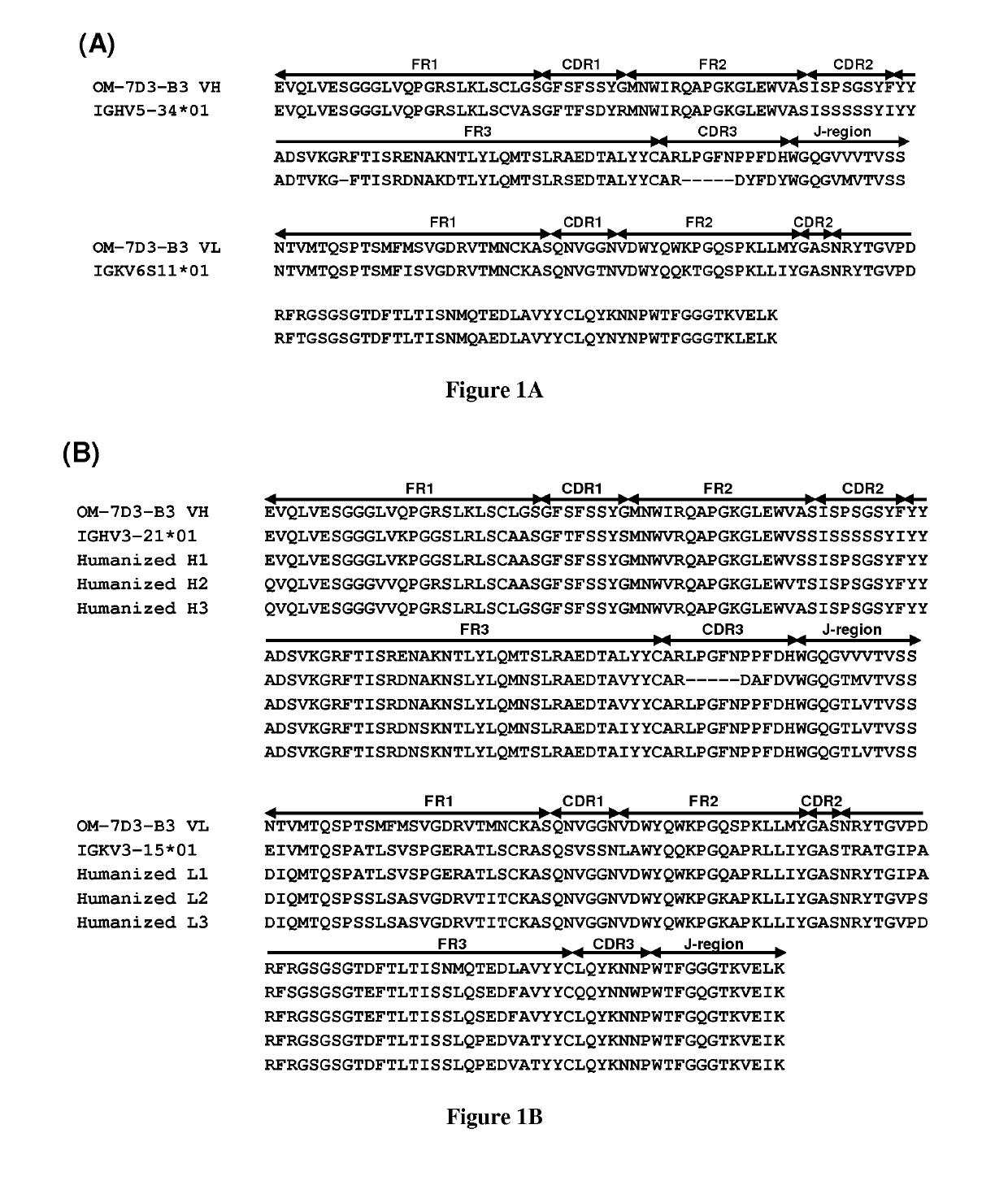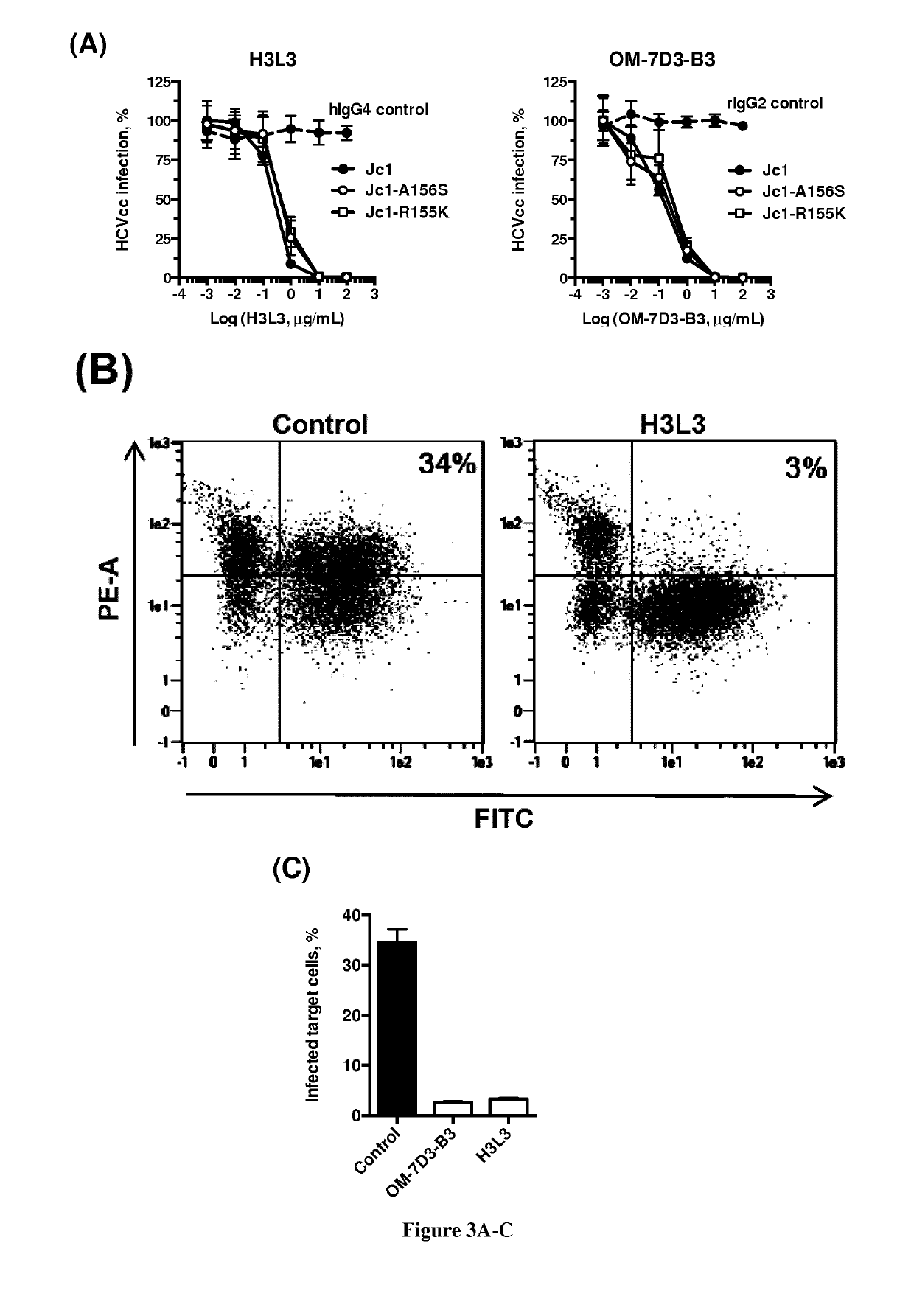Humanized Anti-Claudin-1 Antibodies and Uses Thereof
an anticlaudin-1 and humanized technology, applied in the field of humanized anti-claudin-1 antibodies, can solve the problems of daa-resistant hcv selection, treatment failure, and not all patient groups respond to therapy
- Summary
- Abstract
- Description
- Claims
- Application Information
AI Technical Summary
Benefits of technology
Problems solved by technology
Method used
Image
Examples
example 1
[0081]Material & Methods
[0082]Sequencing of the Variable Region of Rat Anti-CLDN1 mAb OM-7D3-B3.
[0083]Total RNA was isolated in pure RNase-free water from 107 hybridoma cells using the Qiagen RNeasy mini kit. VH and VL cDNAs were prepared using primers derived from the constant domain (CH1) of rat IgG2b and rat kappa light chain by reverse transcription. cDNAs were amplified using a pool of primers corresponding to the signal sequence region and subsequently cloned into pGem-T Easy vector (Promega). Clones were screened for inserts and the DNA sequence determined by sequencing. CDRs were identified with reference to other antibody sequences as described (29).
[0084]Humanization of Rat Anti-CLDN1 mAb OM-7D3-B3 and Antibody Production.
[0085]Humanization was performed by CDR grafting as described (30, 31). Briefly, the human germline VH and VK sequences most similar to the rat anti-CLDN1 mAb OM-7D3-B3 in the IMGT database were identified using the IGBLAST tool (www.ncbi.nlm.nih.gov / igbl...
example 2
[0165]Preclinical Development of a Claudin-1 Specific Monoclonal Antibody for Treatment of Nonalcoholic Steatohepatitis (NASH)
[0166]NASH, the Next Global Epidemic.
[0167]Nonalcoholic fatty liver disease (NAFLD) occurs when excess fat accumulates in liver cells in people who consume little or no alcohol. NAFLD is associated with various metabolic risk factors, such as obesity and diabetes. NAFLD can progress to advanced liver disease and liver cancer (1). Simple fat accumulation, referred to as steatosis, accounts for 80-90% of NAFLD cases, while liver fat accumulation and inflammation, referred to as NASH, accounts for 10-20% (2). NASH represents the most extreme form of NAFLD and 4-22% of HCC cases are NASH-induced in Western countries. Moreover, NAFLD-related cirrhosis accounts for 15-30% of cirrhosis-induced HCC worldwide (3). As NAFLD has reached epidemic proportions and is becoming the most common cause for chronic liver disease, NASH will likely replace chronic hepatitis C as l...
PUM
| Property | Measurement | Unit |
|---|---|---|
| Cytotoxicity | aaaaa | aaaaa |
Abstract
Description
Claims
Application Information
 Login to View More
Login to View More - R&D
- Intellectual Property
- Life Sciences
- Materials
- Tech Scout
- Unparalleled Data Quality
- Higher Quality Content
- 60% Fewer Hallucinations
Browse by: Latest US Patents, China's latest patents, Technical Efficacy Thesaurus, Application Domain, Technology Topic, Popular Technical Reports.
© 2025 PatSnap. All rights reserved.Legal|Privacy policy|Modern Slavery Act Transparency Statement|Sitemap|About US| Contact US: help@patsnap.com



